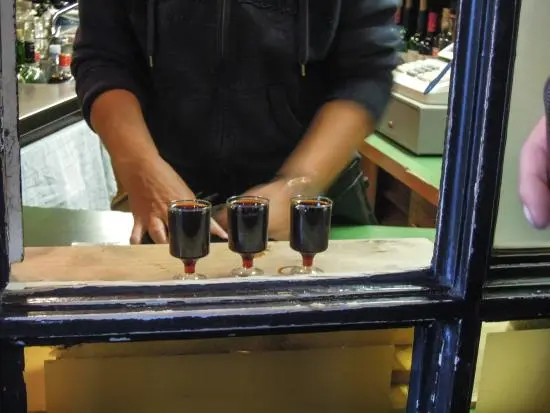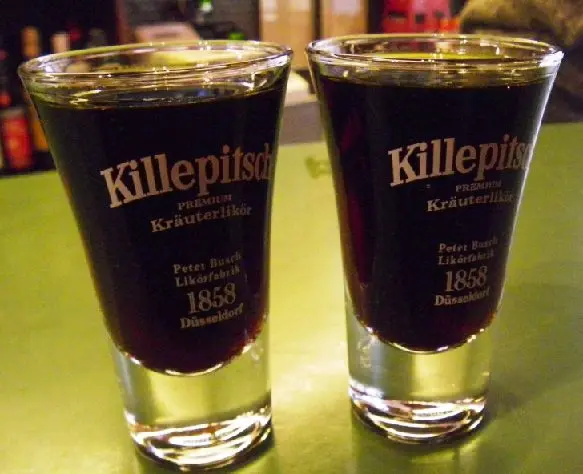The German liqueur Killepich is famous for two things – history and recipe. This Düsseldorf drink has long been the “calling card” of the city and the legitimate pride of local residents, but was not very popular outside of Düsseldorf. Today, Killepich is exported all over the world, the famous balsam is a tourist attraction and an excellent souvenir from Germany.
Although this liqueur does not have the status of a “designation controlled by origin”, Killepitsch is a signature drink with only one producer, today it is Peter Bush, the grandson of Willy Bush, the inventor of the recipe.
Features
Killepich is stronger than vodka, the alcohol content reaches 42%. It is a dark red liqueur with a brown-brick hue. Dusseldorf sommeliers romantically call the color itself “mahogany”, and add a few phrases about “scarlet flashes” in order to finally win the hearts of impressionable tourists.
Killepich strikes with a combination of viscous sweetness and bitterness, caramel and mint are felt most clearly in a rich bouquet. Connoisseurs say that the drink has the deepest aroma, and no other balm can be compared with it in terms of the number of flavor nuances and shades.
The exact recipe for Killepich is kept secret, it is only known that the composition includes extracts of 98 herbs, flowers and spices, and after mixing the ingredients, the finished liquor is infused in clay vessels for another year.

Historical information
During the Second World War, two friends – the then fairly well-known storyteller Hans Müller-Schlosser and the professional distiller Willy Busch – lost hope of salvation. Hiding in a bomb shelter from Allied strategic air raids, they drowned their fear in alcohol.
One day the alcohol ran out. Hans asked a friend to make him a new portion of alcohol. Willie replied that distillers were not allowed to produce alcohol at such a time, but swore to his friend that if fate would spare them, he would create an amazing liquor that makes people first shudder and then squint with pleasure.
The guys still managed to survive, and 10 years later, in 1955, Willy called a friend to the opening of a new bar (to be honest, at that time the size of the establishment was slightly larger than the area of a shoe box) and brought Muller-Schloesser a glass of Killepitsch liqueur, whose name can be loosely translated as “killer swill”.
In Düsseldorf, the Et Kabuffke (“closet”) bar still operates, selling Killepich “on tap” from a small window, and the Germans love to grab a glass or two right on the go, on the way from work.

How to drink Killepich
This strong bittersweet liquor is drunk from small 30-ml glasses, often for dessert without snacks to improve digestion and get rid of heaviness in the stomach after a heavy dinner. Also in Germany, it is customary to eat Killepich with a national dish – pork knuckle.
After the first sip, the viscous thick liquid instantly burns the throat, then notes of sweet molasses and mint appear. The bitterness gradually disappears, leaving only a pleasant warmth in the mouth.

In addition, Killepich can be added to coffee or tea, used as a component of various cocktails. For example, Killepitsch is an excellent substitute for Jägermeister in Black Blood, Mad Dog, Cucumber cocktails.
It is not customary to dilute Killepich with juices or mineral water to reduce the strength, as the unique taste is lost.









